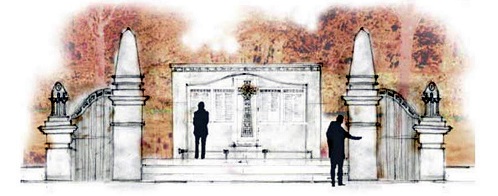A SCOTTISH town which suffered twice the average casualty rate during the First World War is finally to get a memorial to the dead.
More than 160 young men from Neilston, East Renfrewshire, died during the Great War even though the town’s population at the time was just 3,000.
The community was so shattered by the scale of the loss it never got round to setting up a formal memorial.

But with just six months to go to the 100th anniversary of the start of the war, locals have raised the £50,000 needed to create the memorial just off the town’s Main Street.
Neilston lost 164 of its young men between 1914 to 1918, including 16 in one day during the 1915 Battle of Loos.
Local author Jimmy Higgins has championed the campaign by walking from Neilston to France to raise money for the monument.
He is the author of Milltown, a fictionalised account of what life was like in the town during the Great War.

He said: “Neilston lost 5% of the entire population, more than double the national average.
“The attrition rate in Neilston was one of the highest in the world.
“On 25 September 1915 16 men died in one day – that was a really black day.”
If Britain as a whole had suffered the same casualty rates it would have seen over two million die and would likely have lost the war, he said.
Among the names to be added are those of Peter Munley, Thomas Love and Basil Wallace Watt, of the 6th Battalion Gordon Highlanders. He died on 14th March, 1918, just eight months before the war ended.
Mr Higgins said residents of the mill town may have been too traumatized to erect a memorial in the aftermath of the conflict.

He said: “I think they were just too scunnered and they couldn’t stomach it. It was too much to bear.”
As well as devastating the town’s working age population, it had a catastrophic effect on the families of Neilston.
Mr Higgins said: “It meant that the women were left to bring up children alone.
“In pictures from the time the women were all emaciated because they were putting food in their children’s mouths rather than their own.
“With that many wage earners gone there just wasn’t the money.”
Mr Higgins’ 600-mile treck took place in August last year and raised thousands of pounds towards the fund for the memorial.
The monument will take the form of a 14ft high celtic cross which incorporates designs of mill machinery as a tribute to the town’s industrial past.
The memorial, designed by artist Tom McKendrick, will include names of men who died in both world wars and one who died in Northern Ireland.
It will have around 200 names and the list is still being finalised.
It is hoped the memorial will be in place by August, the centenary of the outbreak of the First World War.
